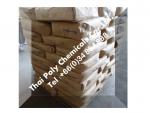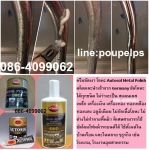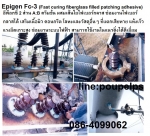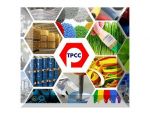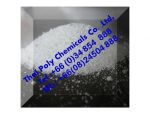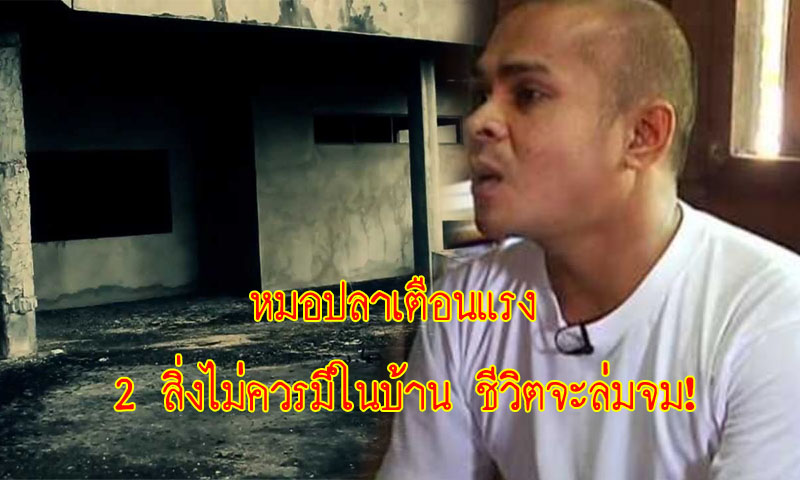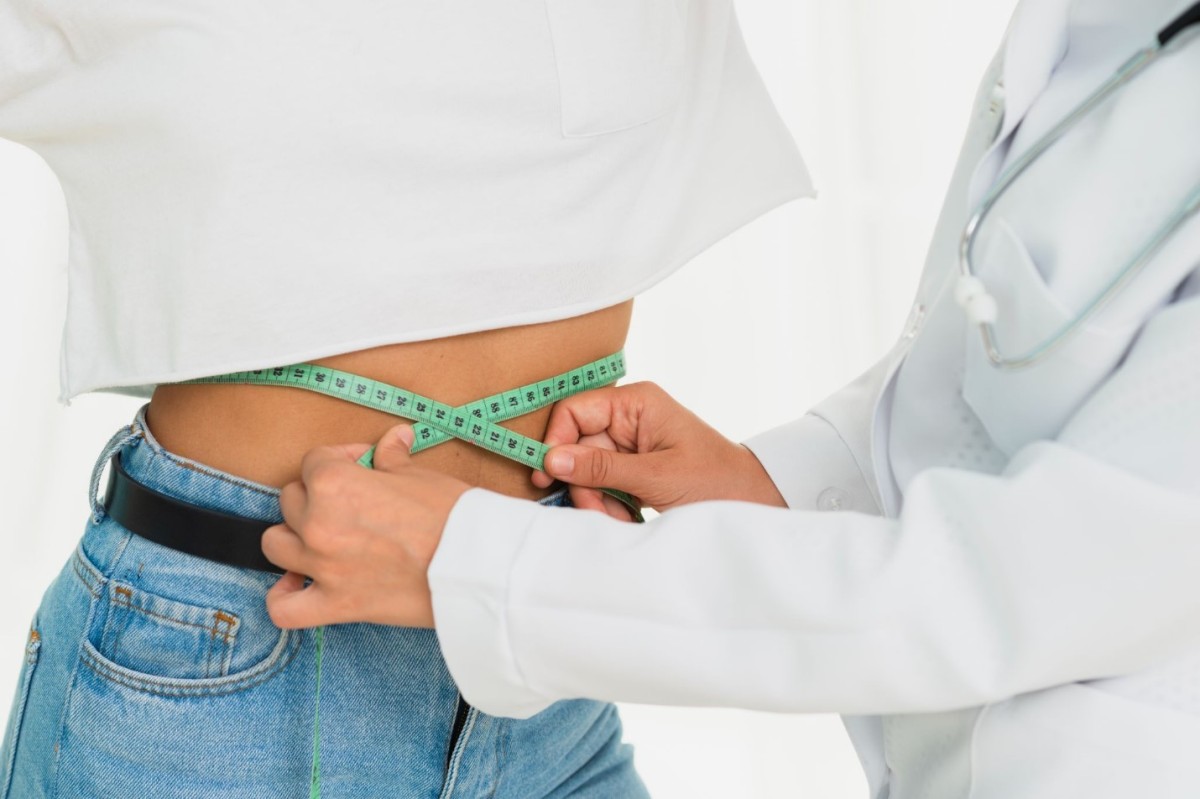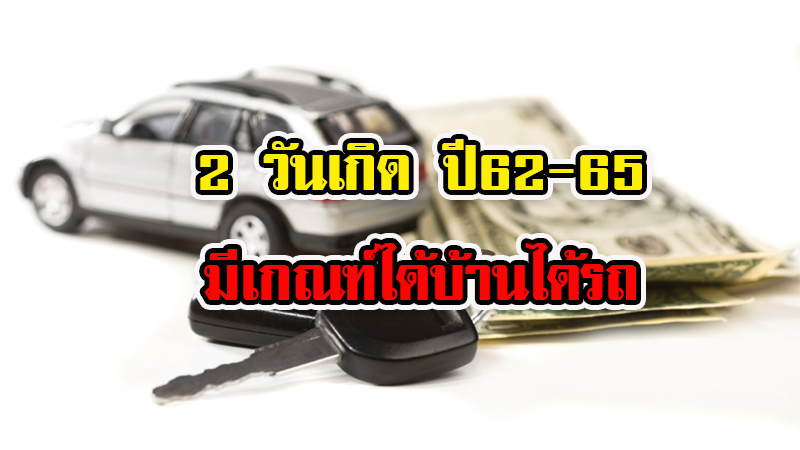PVC paste resin emulsion พีวีซีเพสต์เรซิ่น |
฿1 |
|
ชื่อผู้ประกาศ : ไทยโพลีเคมิคอล เบอร์โทรศัพท์ : 034854888 โทรศัพท์มือถือ : 0800160016 ที่อยู่ : 36/5 ม.9 ต.นาดี อ.เมืองสมุทรสาคร จ.สมุทรสาคร 74000 ร้าน Thai Poly Chemicals |
พีวีซีเรซิ่น พีวีซีเพสต์ พีวีซีพลาสติซอล
Polyvinyl Chloride Resin, PVC
resin, โพลีไวนิลคลอไรด์เรซิน, พีวีซีเรซินPVC paste resin, PVC emulsion, พีวีซีเพสต์เรซิ่น, พีวีซีอีมัลชัน
PVC dispersion, พีวีซีเพสต์,
พีวีซีดิสเพอร์สชัน
พอลิไวนิลคลอไรด์ (Polyvinyl chloride; IUPAC: Polychloroethene) มีชื่อย่อที่ใช้กันทั่วไปว่า พีวีซี (PVC) เป็นเทอร์โมพลาสติกชนิดหนึ่ง
พอลิไวนิลคลอไรด์ เตรียมได้จากมอนอเมอร์ไวนิลคลอไรด์ โดยปฏิกิริยาพอลิเมอร์ไรเซชันแบบรวมตัว มีการใช้เทคนิคพอลิเมอร์ไรเซชัน โดยใช้น้ำเย็น เข้าสู่ช่องรอบปฏิกรณ ์พอลิไวนิลคลอไรด์ มีโครงสร้าง เพื่อให้ได้พีวีซี ที่อ่อน ดัดงอ ได้ง่าย ไม่เปราะ ทำให้สามารถ นำไปใช้ประโยชน์ต่างๆได้มากขึ้น พลาสติไซเซอร์ ที่ใช้กันมาก สำหรับพีวีซี คือ เบาะรถยนต์ เสื้อกันฝน รองเท้าแตะ กระเป๋าถือ กระเป๋าเดินทาง ฉนวนหุ้มสายไฟ
พีวีซี (PVC) หรือ Polyvinyl Chloride เป็นพลาสติกชนิดหนึ่งซึ่งสังเคราะห์ขึ้นมาจาก VCM หรือ Vinyl Chloride Monomer เป็นพลาสติกที่จัดอยู่ในประเภทเทอร์โมพลาสติก (Thermoplastic) คือมีโครงสร้างเป็นเส้นตรง สามารถหลอมเหลวขึ้นรูปได้ด้วยความร้อนและยังสามารถนำกลับมาหลอมใช้ใหม่ (Recycle) ได้ ซึ่งคุณลักษณะทั่วไปเป็นผงละเอียดสีขาว เมื่อ
ติดไฟแล้วสามารถดับได้ตัวเองได้ (Self extinguish) ทนต่อสภาพกรด-ด่างและน้ำได้
ไม่ทนความร้อน ต้องมีการเติมสารเติมแต่งก่อนนำไปใช้งาน ท่อน้ำพีวีซี ข้อต่อพีวีซี ฉนวนหุ้มสายไฟ หนังเทียม ฯลฯ
เพื่อขึ้นรูปต่อไป ในการพิจารณาเลือกเกรดพีวีซีเรซินเพื่อจะนำไปใช้งานนั้น
ควรปรึกษาหรือขอคำแนะนำจากเจ้าหน้าที่ส่วนบริการเทคนิคในเบื้องต้นก่อน
หรือนำไปใช้งานโดยอยู่ภายใต้เงื่อนไขต่างๆ ที่กำหนดในเอกสาร Product information หรือนำไปใช้โดยมีผู้ควบคุมที่มีความเชี่ยวชาญเรื่องพีวีซีเรซินเป็นอย่างดีจึงจะทำให้มีการเลือกใช้เกรดพีวีซีเรซินได้อย่างเหมาะสม ถูกต้อง มีประสิทธิภาพ
ไม่ส่งผลกระทบต่อคุณภาพของผลิตภัณฑ์ที่ผลิตได้และผู้บริโภคในลำดับถัดไปการพิจารณาเพื่อนำพีวีซีเรซินไปใช้งาน
มีเงื่อนไขและรายละเอียดที่ต้องพิจารณา ดังนี้2.1
การเลือกเกรดพีวีซีเรซิน ควรพิจารณาจาก
- ชนิดของผลิตภัณฑ์ที่จะผลิตว่าเป็นชนิดนิ่มหรือชนิดแข็ง
- คุณสมบัติด้านต่างๆ
ที่ต้องการซึ่งเกี่ยวข้องกับระดับค่า K ต่างกัน เช่น
รูพรุน (Porous)
ความแข็งแรง (Strength),
การยืดตัว (Elongation)
ความเหนียว (Stiffness)
ความใส (Clarity)
อุณหภูมิที่ใช้ในการขึ้นรูป
(Melt temperature)
- คุณสมบัติพิเศษของผลิตภัณฑ์ที่ต้องการผลิต
(ตามมาตรฐานผลิตภัณฑ์กำหนด) ทั้งนี้สามารถดูรายละเอียดเพิ่มเติมได้จาก Product
information หรือสอบถามจากเจ้าหน้าที่ส่วนบริการเทคนิค
2.2 สารเติมแต่งอื่นๆ
(Additive) ที่ใช้ในการขึ้นรูปผลิตภัณฑ์ เนื่องจากพีวีซีมีคุณสมบัติไม่เหมาะสมในการขึ้นรูปเป็นผลิตภัณฑ์โดยตรงได้
เนื่องจากไม่ทนต่อความร้อน ดังนั้นจึงต้องมีการผสมสารเติมแต่งบางชนิดลงไป เพื่อให้ขึ้นรูปได้และมีคุณสมบัติตามที่ต้องการโดยเรียก
2.2.1 สารทำให้เสถียร
(Stabilizer) มีหน้าที่ยับยั้งการเกิดการเสื่อมสลายของ พีวีซีเมื่อได้รับความร้อนหรือพลังงานแสง
ช่วยให้พีวีซีคงทนต่อความร้อน ป้องกันการ ไหม้ คุณสมบัติของสารทำให้เสถียรที่สำคัญ คือควรจะผสมเข้ากันได้ดีกับพีวีซีเและสารประกอบอื่นๆ ไม่เป็นสารอันตราย
ออกมา
ทำให้รู้สึกระคายเคืองระบบหายใจและคุณสมบัติของผลิตภัณฑ์ด้อยลงหรือได้รับความเสียหาย
ดังนั้นในการพิจารณานำมาใช้งานควรปรึกษาหรือขอคำแนะนำจากบริษัทผู้ผลิตหรือผู้แทนจำหน่ายก่อน2.2.2
สารทำให้อ่อนตัว (Plasticizer) เป็นสารที่เติมเพื่อช่วยในการปรับเปลี่ยน
พีวีซีชนิดแข็งให้เป็นพีวีซีชนิดนิ่มได้ คุณสมบัติของสารทำให้อ่อนตัวที่ต้องการคือ เป็นสารที่มีจุดเดือดสูง ไม่ระเหยง่าย ไม่ติดไฟและสามารถผสมเข้ากันได้ดีกับพีวีซี
2.2.3 สารเพิ่มเนื้อ
(Filler) ที่ใช้ส่วนใหญ่ในงานขึ้นรูปผลิตภัณฑ์พีวีซีนั้นเป็น
สารชื่อ แคลเซียมคาร์บอเนต ใช้เป็นสารเพิ่มปริมาณหรือเพิ่มเนื้อในผลิตภัณฑ์เพื่อลดต้นทุน การผลิต ปรับปรุงค่าความต้านทานการนำไฟฟ้า ช่วยต้านทานการเกิดสีเหลืองจากแสง ช่วยลดการเสียรูปเนื่องจากความร้อนและช่วยลดการติดกันของชิ้นงาน การเติมสารเพิ่มเนื้อในปริมาณมากจะมีผลกระทบโดยตรงกับคุณภาพของผลิตภัณฑ์คือจะทำให้ความแข็งของผลิตภัณฑ์เพิ่มขึ้นและความสามารถในการยืดลดลงอย่างมาก
2.2.4 สารหล่อลื่น (Lubricant)
เป็นสารที่ช่วยหล่อลื่นในกระบวนการขึ้นรูปผลิตภัณฑ์พีวีซี
ช่วยพีวีซีสามารถขึ้นรูปได้ง่ายและผิวเรียบ สามารถแบ่งเป็น 2
ประเภท คือ
2.2.4.1 External lubricant ช่วยลดความเสียดทานและการเกาะติดระหว่างพีวีซีที่หลอมเหลวกับส่วนของเครื่องจักรที่เป็นโลหะร้อน
เช่นScrew, Barrel, Mould ตัวอย่างของสารหล่อลื่น เช่น Paraffin
waxes
2.2.4.2 Internal lubricant ช่วยลดความเสียดทานระหว่างอนุภาคของพีวีซีด้วยกันเองในระหว่างการหลอมตัวตัวอย่างของสารหล่อลื่นเช่น
Glycerol Mono Stearate (GMS)
การเลือกใช้ชนิดและปริมาณของสารหล่อลื่นได้อย่างเหมาะสมจะช่วยลดปัญหาการไหม้ติดของพีวีซีในเครื่องจักรได้เป็นอย่างดี
2.2.5
สารต้านทานแรงกระแทก (Impact modifier) เป็นสารที่เติมเพื่อเพิ่มความต้านทานต่อแรงกระแทกของพีวีซีให้สูงขึ้น
หรือทำให้ผลิตภัณฑ์มีความเหนียวเพิ่มขึ้น
กับพีวีซีและสาร เติมแต่ง อื่นได้ดี
ตัวอย่างของสารต้านทานแรงกระแทกที่ใช้งานอยู่เช่น Terpolymer of Methyl Methacrylate-Butadiene-Styrene (MBS), Acrylic และ Chlorinated Polyethylene (CPE)2.2.6
สารช่วยในการขึ้นรูป (Processing aid) เป็นสารที่ช่วยให้การหลอมตัว
ขึ้นรูปของพีวีซีง่ายขึ้น เพิ่ม Melt strength ของพีวีซีที่หลอมทำให้ขึ้นรูปได้ง่ายขึ้น
นอกจากนี้ยังช่วยลดการเกิด Plate out และช่วยให้ผิวชิ้นงานสวยงาม
ตัวอย่างของ สารช่วยในการขึ้นรูปที่นิยมใช้กัน เช่นกลุ่ม Acrylic polymer
2.2.7 สี (Pigment)
ใช้เพื่อเพิ่มความสวยงามของผลิตภัณฑ์ การใช้สีในพีวีซี ทำได้ 2 วิธีคือการใช้สีโดยตรงหรือการทำเป็นแม่สีเข้มข้น (Master batch) คุณสมบัติของสีที่ดี
ควรมีความคงทนต่อความร้อนและแสงทนต่อสภาวะแวดล้อมได้ดี ต้านทานต่อการเกิด Migration
ไม่เกิดปฏิกิริยาต่อสารเคมีต่างๆ
ที่ใช้ในสูตรและมีการกระจายตัวที่ดี ตัวอย่างสีที่ใช้งาน เช่น สีขาวเป็นสาร Titanium
Dioxide (TiO2)
2.2.8
สารเติมแต่งพิเศษ (Special additive) เป็นสารที่เติมเพื่อใช้ปรับปรุงคุณสมบัติเฉพาะตัวของพีวีซีให้ดีขึ้นอีก
ซึ่งส่วนใหญ่ใช้ในปริมาณน้อยแต่ส่งผลต่อคุณสมบัติของผลิตภัณฑ์เป็นอย่างมาก เช่น
agent) ลดการเกาะติดของแผ่นฟิล์ม
สารช่วยให้ชิ้นงานมีน้ำหนักเบา (Blowing agent) โดยทำให้เกิดฟองอากาศในผิวชิ้นงาน
เป็นต้น
2.2.9
การนำพีวีซีเรซินไปผลิตร่วมกับพอลิเมอร์ชนิดอื่นๆ (PVC blends) เป็นการนำพีวีซีเรซินไปผสมกับพลาสติกชนิดอื่นๆ
ที่นอกเหนือจากสารเติมแต่งอื่นๆ ที่กล่าวมาข้างต้น เช่น PVC ผสมกับ
NBR (Nitrile butadiene rubber) ผู้ใช้ต้องพิจารณาการนำไปใช้อย่างเหมาะสมเพื่อลดผลกระทบที่อาจจะเกิดกับผลิตภัณฑ์ที่ผลิต
ดังนั้นในการเลือกใช้พีวีซีเรซิน สารเติมแต่งและพอลิเมอร์ชนิดอื่น สำหรับขึ้นรูปผลิตภัณฑ์พีวีซีจะต้องมีการกำหนดสูตรการผลิตที่เหมาะสมและถูกต้อง จึงจะสามารถขึ้นรูปผลิตภัณฑ์ได้อย่างมีประสิทธิภาพ
ต้องคำนึงถึงกฎหมายหรือข้อบังคับของแต่ละท้องถิ่นและแต่ละผลิตภัณฑ์ด้วย
ผู้ใช้งาน/ผู้ผลิตจะต้องศึกษาคู่มือการใช้งาน เอกสาร SDS และเอกสารอื่นๆ ที่เกี่ยวข้อง รวมถึงการขอคำปรึกษาหรือข้อแนะนำจากเจ้าหน้าที่เทคนิคของบริษัทผู้ผลิตหรือจัดจำหน่ายก่อนใช้งาน จึงจะสามารถผลิตสินค้าได้อย่างมีคุณภาพและปลอดภัยสำหรับผู้บริโภคในลำดับถัดไปPoly(vinyl chloride), commonly
abbreviated PVC, is the third-most widely produced plastic, after polyethylene
and polypropylene. PVC is used in construction because it is more effective
than traditional materials such as copper, iron or wood in pipe and profile
applications. It can be made softer and more flexible by the addition of
plasticizers, the most widely used being phthalates. In this form, it is also
used in clothing and upholstery, electrical cable insulation, inflatable
products and many applications in which it replaces rubber.Pure poly(vinyl chloride) is a
white, brittle solid. It is insoluble in alcohol, but slightly soluble in
tetrahydrofuran.Microstructure
The polymers are linear and are
strong. The monomers are mainly arranged head-to-tail, meaning that there are
chlorides on alternating carbon centres. PVC has mainly an atactic
stereochemistry, which means that the relative stereochemistry of the chloride
centres are random. Some degree of syndiotacticity of the chain gives a few
percent crystallinity that is influential on the properties of the material.
About 57% of the mass of PVC is chlorine. The presence of chloride groups gives
the polymer very different properties from the structurally related material
polyethylene.Additives to finished polymer
The product of the polymerization
process is unmodified PVC. Before PVC can be made into finished products, it
always requires conversion into a compound by the incorporation of additives
such as heat stabilizers, UV stabilizers, lubricants, plasticizers, processing
aids, impact modifiers, thermal modifiers, fillers, flame retardants, biocides,
blowing agents and smoke suppressors, and, optionally pigments.[8] The choice
of additives used for the PVC finished product is controlled by the cost
performance requirements of the end use specification e.g. underground pipe,
window frames, intravenous tubing and flooring all have very different
ingredients to suit their performance requirements.Phthalate plasticizers
Most vinyl products contain
plasticizers which dramatically improve their performance characteristic. The
most common plasticizers are derivatives of phthalic acid. The materials are
selected on their compatibility with the polymer, low volatility levels, and
cost. These materials are usually oily colourless substances that mix well with
the PVC particles. 90% of the plasticizer market, estimated to be millions of
tons per year worldwide, is dedicated to PVCHigh and low molecular weight
phthalatesPhthalates can be divided into two
groups: high and low molecular weight, with high molecular weight phthalates
now representing over 80 percent of European market for plasticisers. Low
molecular weight phthalates include those with 3-6 carbon atoms in their
chemical backbone; the most common types being Di(2-ethylhexyl) phthalate
(DEHP), Di-butyl phthalate (DBP), Di- isobutyl phthalate (DIBP) and Butyl
benzyl phthalate (BBP). Because of possible health effects of low phthalates in
the environment, including Di(2-ethylhexyl) phthalate, there is movement to
replace them with safer alternatives in Canada, the European Union, and the
United States. They represent about 15% of the European market. High molecular
weight phthalates include those with 7-13 Carbon atoms in their chemical
backbone, which gives them increased permanency and durability. The most common
types of high phthalates include di-isononyl phthalate (DINP) and di-isodecyl
phthalate (DIDP). The European market has been shifting in the last decade from
low to high phthalates, which today represent over 80% of all the phthalates
currently being produced in Europe.Heat stabilizers
One of the most crucial additives
are heat stabilizers. These agents minimize loss of HCl, a degradation process
that starts above 70 ?C. Once dehydrochlorination starts, it is autocatalytic.
Many diverse agents have been used including, traditionally, derivatives of
heavy metals (lead, cadmium). Increasingly, metallic soaps (metal
"salts" of fatty acids) are favored, species such as calcium
stearate.[4] Addition levels vary typically from 2% to 4%. The choice of the
best heat stabilizer depends on its cost effectiveness in the end use
application, performance specification requirements, processing technology and
regulatory approvals.Rigid PVC Applications
In Europe there has been a
commitment to eliminate the use of cadmium (previously used as a part component
of heat stabilizers in window profiles) and phase out lead based heat
stabilizers (as used in pipe and profile areas) by 2015. According to the final
report of Vinyl 2010[9] cadmium was eliminated across Europe by 2007. The
progressive substitution of lead-based stabilizers is also confirmed in the
same document showing a reduction of 75% since 2000 and ongoing. This is
confirmed by the corresponding growth in calcium-based stabilizers, used as an
alternative to lead-based stabilizers, more and more, also outside Europe.Tin based stabilizers are mainly
used in Europe for rigid, transparent applications due to the high temperature
processing conditions used. The situation in North America is different where
tin systems are used for almost all-rigid PVC applications. Tin stabilizers can
be divided into two main groups, the first group containing those with
tin-oxygen bonds and the second group with tin-sulphur bonds. According to the
European Stabiliser producers most organotin stabilisers have already been successfully
REACH registered. More chemical and use information is also available on this
site.Flexible PVC Applications
Flexible PVC coated wire and cable
for electrical use has traditionally been stabilised with lead but these are
being replaced, as in the rigid area, with calcium based systems.Liquid mixed metal stabilisers are
used in several PVC flexible applications such as calendered films, extruded
profiles, injection moulded soles and footwear, extruded hoses and plastisols
where PVC paste is spread on to a backing (flooring, wall covering, artificial
leather). Liquid mixed metal stabiliser systems are primarily based on barium,
zinc and calcium carboxylates. In general liquid mixed metals like BaZn, CaZn
require the addition of co-stabilisers, antioxidants and organo-phosphites to
provide optimum performance.BaZn stabilisers have successfully
replaced cadmium-based stabilisers in Europe in many PVC semi-rigid and
Applications
PVC's relatively low cost,
biological and chemical resistance and workability have resulted in it being
used for a wide variety of applications. It is used for sewerage pipes and
other pipe applications where cost or vulnerability to corrosion limit the use
of metal. With the addition of impact modifiers and stabilizers, it has become
a popular material for window and door frames. By adding plasticizers, it can
become flexible enough to be used in cabling applications as a wire insulator.
It has been used in many other applications. PVC demand is likely to increase
at an average annual rate of 3.9% over the next years.Pipes
Roughly half of the world's
polyvinyl chloride resin manufactured annually is used for producing pipes for
municipal and industrial applications.[19] In the water distribution market it
accounts for 66% of the market in the US, and in sanitary sewer pipe
applications, it accounts for 75%.[20] Its light weight, low cost, and low
maintenance make it attractive. However, it must be carefully installed and
bedded to ensure longitudinal cracking and overbelling does not occur.
Additionally, PVC pipes can be fused together using various solvent cements, or
heat-fused (butt-fusion process, similar to joining HDPE pipe), creating
permanent joints that are virtually impervious to leakage.In February, 2007 the California
Building Standards Code was updated to approve the use of chlorinated polyvinyl
chloride (CPVC) pipe for use in residential water supply piping systems. CPVC
has been a nationally accepted material in the US since 1982; California,
however, has permitted only limited use since 2001. The Department of Housing
and Community Development prepared and certified an environmental impact
statement resulting in a recommendation that the Commission adopt and approve
the use of CPVC. The Commission's vote was unanimous and CPVC has been placed
in the 2007 California Plumbing Code.In the United States and Canada,
PVC pipes account for the largest majority of pipe materials used in buried municipal
applications for drinking water distribution and wastewater mains. Buried PVC
pipes in both water and sanitary sewer applications that are 4 inches (100 mm)
in diameter and larger are typically joined by means of a gasket-sealed joint.
The most common type of gasket utilized in North America is a metal reinforced
elastomer, commonly referred to as a Rieber sealing system.Electric cables
PVC is commonly used as the
insulation on electrical cables; PVC used for this purpose needs to be
plasticized. In a fire, PVC-coated wires can form hydrogen chloride fumes; the
chlorine serves to scavenge free radicals and is the source of the material's
fire retardance. While HCl fumes can also pose a health hazard in their own
right, HCl dissolves in moisture and breaks down onto surfaces, particularly in
areas where the air is cool enough to breathe, and is not available for
inhalation. Frequently in applications where smoke is a major hazard (notably
in tunnels and communal areas) PVC-free cable insulation is preferred, such as
low smoke zero halogen (LSZH) insulation. Any metal parts must not be mixed
together during the raw material stage, as it may lead to EMI. uPVC, also known
as rigid PVC, is extensively used in the building industry as a low-maintenance
material, particularly in Ireland, the United Kingdom, and in the United
States. In the USA it is known as vinyl, or vinyl siding. The material comes in
a range of colors and finishes, including a photo-effect wood finish, and is
used as a substitute for painted wood, mostly for window frames and sills when
installing double glazing in new buildings, or to replace older single-glazed
windows. Other uses include fascia, and siding or weatherboarding. This
material has almost entirely replaced the use of cast iron for plumbing and
drainage, being used for waste pipes, drainpipes, gutters and downspouts. uPVC
does not contain phthalates, since those are only added to flexible PVC, nor
does it contain BPA. uPVC is known as having strong resistance against chemicals,
sunlight, and oxidation from water.Signs
Poly(vinyl chloride) is formed in
flat sheets in a variety of thicknesses and colors. As flat sheets, PVC is
often expanded to create voids in the interior of the material, providing
additional thickness without additional weight and minimal extra cost (see
Closed-cell PVC foamboard). Sheets are cut using saw and rotary cutting
equipment. Plasticized PVC is also used to produce thin, colored, or clear,
adhesive-backed films referred to simply as vinyl. These films are typically
cut on a computer-controlled plotter or printed in a wide-format printer. These
sheets and films are used to produce a wide variety of commercial signage
products and markings on vehicles, e.g. car body stripes. PVC has become widely
used in clothing, to either create a leather-like material or at times simply
for the effect of PVC. PVC clothing is common in Goth, Punk, clothing fetish
and alternative fashions. PVC is cheaper than rubber, leather, and latex which
it is therefore used to simulate. PVC fabric has a sheen to it and is
waterproof so is used in coats, skiing equipment, shoes, jackets, aprons, and
bags.Healthcare
The two main application areas for
single use medically approved PVC compounds are flexible containers and tubing:
containers used for blood and blood components for urine or for ostomy products
and tubing used for blood taking and blood giving sets, catheters, heart-lung
bypass sets, haemodialysis set etc. In Europe the consumption of PVC for
medical devices is approximately 85.000 tons every year. Almost one third of
plastic based medical devices are made from PVC. The reasons for using flexible
PVC in these applications for over 50 years are numerous and based on cost
effectiveness linked to transparency, light weight, softness, tear strength,
kink resistance, suitability for sterilization and biocompatibility.Plasticisers
DEHP (Di-2ethylhexylphthalate) has
been medically approved for many years for use in such medical devices; the
PVC-DEHP combination proving to be very suitable for making blood bags because
DEHP stabilises red blood cells, minimising haemolysis (red blood cell
rupture). However, DEHP is coming under increasing pressure in Europe. The
assessment of potential risks related to phthalates, and in particular the use
of DEHP in PVC medical devices, was subject to scientific and policy review by
the European Union authorities, and on 21 March 2010, a specific labelling
requirement was introduced across the EU for all devices containing phthalates
that are classified as CMR (carcinogenic, mutagenic or toxic to reproduction).
The label aims to enable healthcare professionals to use this equipment safely,
and, where needed, take appropriate precautionary measures for patients at risk
of over-exposure.DEHP alternatives, which are
gradually replacing it, are Adipates, Butyryltrihexylcitrate (BTHC),
Cyclohexane-1,2-dicarboxylic acid, diisononylester (DINCH),
Di(2-ethylhexyl)terephthalate, polymerics and trimellitic acid,
2-ethylhexylester (TOTM).Flooring
Flexible PVC flooring is
inexpensive and used in a variety of buildings covering the home, hospitals,
offices, schools, etc. Complex and 3D designs are possible due to the prints
that can be created which are then protected by a clear wear layer. A middle
vinyl foam layer also gives a comfortable and safe feel. The smooth, tough
surface of the upper wear layer prevents the build up of dirt which prevents
microbes from breeding in areas that need to be kept sterile, such as hospitals
and clinics. PVC has been used for a host of consumer products of relatively
smaller volume compared to the industrial and commercial applications described
above. Another of its earliest mass-market consumer applications was to make
vinyl records. More recent examples include wallcovering, greenhouses, home
playgrounds, foam and other toys, custom truck toppers (tarpaulins), ceiling
tiles and other kinds of interior cladding.
สอบถามข้อมูลเพิ่มเติมได้ที่
ฝ่ายขายThai Poly Chemicals Co., Ltd.
บริษัท ไทยโพลีเคมิคอล จำกัด
ที่อยู่36/5 ม.9 แขวง/ตำบลนาดี
เขต/อำเภอเมืองสมุทรสาคร
จังหวัดสมุทรสาคร รหัสไปรษณีย์74000Tel.: 034854888,
034496284
Fax.: 034854899,
034496285
Mobile: 0824504888,
0800160016
Website :
www.thaipolychemicals.comEmail1 : thaipolychemicals@hotmail.com
Email2 : info@thaipolychemicals.com
PVCemulsionpasteLiquidsuspensionพีวีซีพลาสติซอลdispersionplastisolพีวีซีเพสต์เรซิ่นresin

